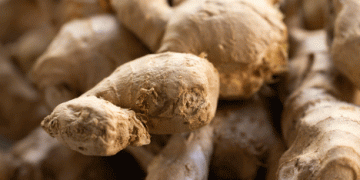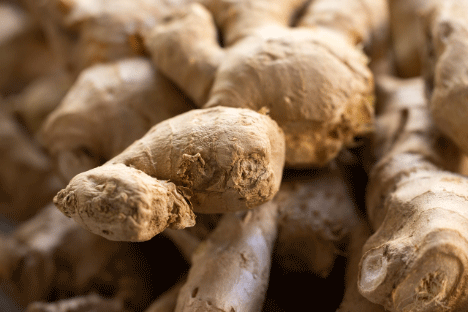Peru, a leading global exporter of ginger and turmeric, has seen a sharp decline in exports of these key crops in 2024. By the 34th week of the year, the country had exported 26,480 tons of ginger and turmeric, valued at $51.6 million FOB (Free on Board). This represents a 44% decrease compared to the same period last year, according to data from Agraria.pe.
Market Breakdown: North America and Europe Struggle
North America, which traditionally receives the largest share of Peru’s ginger and turmeric exports (61%), saw a 32% drop in shipments. This decline is significant, as the U.S. and Canada have long been key destinations for Peruvian ginger, particularly organic varieties, which are prized for their high quality and flavor. The economic slowdown and changing consumption patterns in these regions could be contributing to the reduced demand.
Europe, the second-largest market with a 38% share, experienced an even steeper decline, with exports down by 57%. European consumers have been grappling with inflation and increased food prices, which may be curbing their spending on premium products like organic ginger. The monetary value of exports to Europe fell to $17.8 million, a substantial decrease compared to previous years.
Latin America Bucks the Trend
In contrast to North America and Europe, Latin America saw an increase in demand, although its market share remains relatively small at 2%. Export volume to Latin American countries surged by 106%, with a total value of $634,070. This increase may reflect growing regional interest in natural and organic products, as well as efforts by Peruvian exporters to diversify their markets amidst declining demand from traditional buyers.
Organic and Conventional Ginger: A Tale of Two Markets
Organic ginger, which accounts for 84% of Peru’s ginger exports, saw a 33% reduction in shipments. Despite this, organic ginger continues to dominate Peru’s ginger export landscape due to its high demand in health-conscious markets, especially in North America and Europe. However, the drop signals potential challenges, such as supply chain disruptions or market saturation.
Conventional ginger, which makes up 16% of exports, experienced a far more dramatic decline, plummeting by 70%. This sharp drop suggests that the market for non-organic ginger is shrinking more rapidly, potentially due to consumer preference shifting toward organic options or competition from other producing countries offering cheaper conventional ginger.
Leading Exporters
Despite the downturn, five companies have continued to lead Peru’s ginger and turmeric export efforts: Blue Pacific Oils, JCH Agroexportaciones, Vancard Peru, Agronegocios La Grama, and Cooperativa Agraria Vancardbio Pichanaqui. These exporters have navigated a challenging global market, with some diversifying into other regions or adjusting their supply chains to cope with reduced demand from their traditional buyers.
The 44% decline in Peru’s ginger and turmeric exports by the 34th week of 2024 underscores the volatility in global agricultural markets. While demand from North America and Europe has dropped, Latin America’s growing appetite for these products offers a glimmer of hope. Peruvian exporters will need to adapt to changing global conditions by diversifying their markets, improving supply chain resilience, and possibly exploring new product innovations to regain momentum.































